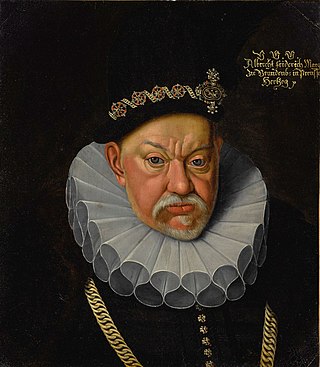
Albert Frederick was the Duke of Prussia, from 1568 until his death. He was a son of Albert of Prussia and Anna Marie of Brunswick-Lüneburg. He was the second and last Prussian duke of the Ansbach branch of the Hohenzollern family.
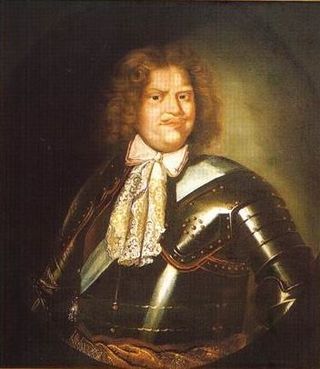
Johann George III was Elector of Saxony from 1680 to 1691. He belonged to the Albertine branch of the House of Wettin.

John George I was Elector of Saxony from 1611 to 1656. He led Saxony through the Thirty Years' War, which dominated his 45-year reign.

John George IV was Elector of Saxony from 1691 to 1694.
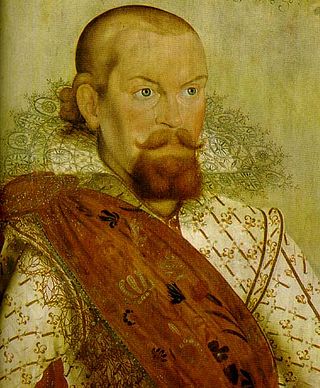
Christian, Margrave of Brandenburg-Bayreuth was a member of the House of Hohenzollern and Margrave of Brandenburg-Kulmbach.

Christian I of Saxony was Elector of Saxony from 1586 to 1591. He belonged to the Albertine branch of the House of Wettin.

Friedrich Wilhelm II, was a duke of Saxe-Altenburg.

Sophia Eleonore of Saxony was a duchess of Saxony by birth and the landgravine of Hesse-Darmstadt from 1627 to 1661 through her marriage to Landgrave George II. She was the eldest surviving child of John George I, Elector of Saxony, and Magdalene Sibylle of Prussia.

Augustus of Saxe-Weissenfels, was a Duke of Saxe-Weissenfels-Querfurt of the House of Wettin and administrator of the Archbishopric of Magdeburg.

Christian I of Saxe-Merseburg, was the first duke of Saxe-Merseburg and a member of the House of Wettin.

Maurice of Saxe-Zeitz was a duke of Saxe-Zeitz and member of the House of Wettin.

Christian Ernst of Brandenburg-Bayreuth was a member of the House of Hohenzollern and Margrave of Brandenburg-Bayreuth.

Princess Anna Sophie of Denmark and Norway was the eldest daughter of King Frederick III of Denmark and Sophie Amalie of Brunswick-Lüneburg, and Electress of Saxony from 1680 to 1691 as the wife of John George III.
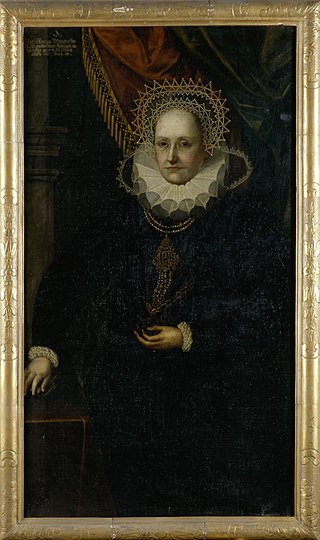
Duchess Marie Eleonore of Cleves was the Duchess of Prussia by marriage to Albert Frederick, Duke of Prussia. She was the eldest child of William, Duke of Jülich-Cleves-Berg and Maria of Austria.

Magdalene Sibylle of Prussia was an Electress of Saxony as the spouse of John George I, Elector of Saxony.

Magdalene Sibylle of Brandenburg-Bayreuth was Electress of Saxony from 1656 to 1680 as the wife of John George II. The daughter of Christian, Margrave of Brandenburg-Bayreuth, and Marie of Prussia, she was by birth a Markgräfin, or Margravine, and a member of the Brandenburg-Bayreuth branch of the House of Hohenzollern.

Magdalene Sibylle of Saxony, in Denmark known as Magdalena Sibylla, was the Princess of Denmark and Norway from 1634 to 1647 as the wife of Prince-Elect Christian of Denmark, and the Duchess consort of Saxe-Altenburg as the wife of Frederick Wilhelm II, Duke of Saxe-Altenburg.
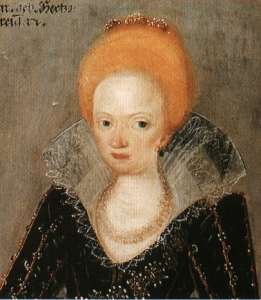
Marie of Prussia was a Prussian duchess by birth and Margravine of Brandenburg-Bayreuth by marriage.

Princess Christiana of Schleswig-Holstein-Sonderburg-Glücksburg, often referred to as Christiane was the consort of Christian I, Duke of Saxe-Merseburg, who was the ruling Duke of Saxe-Merseburg from 1650 until his death.
Sibylle is a given name. It may refer to:






















